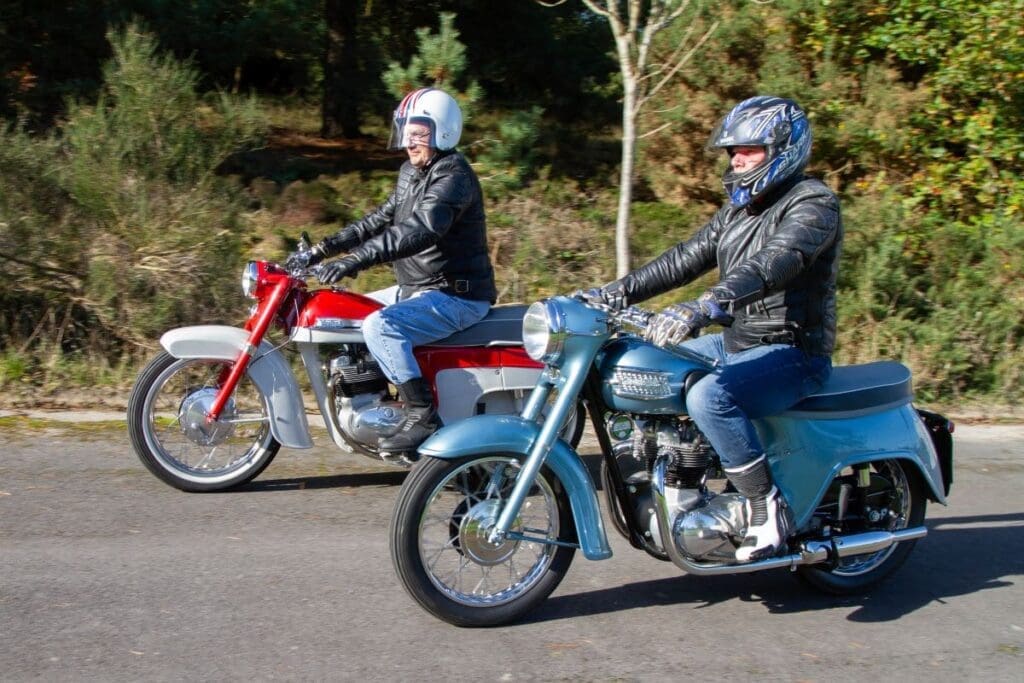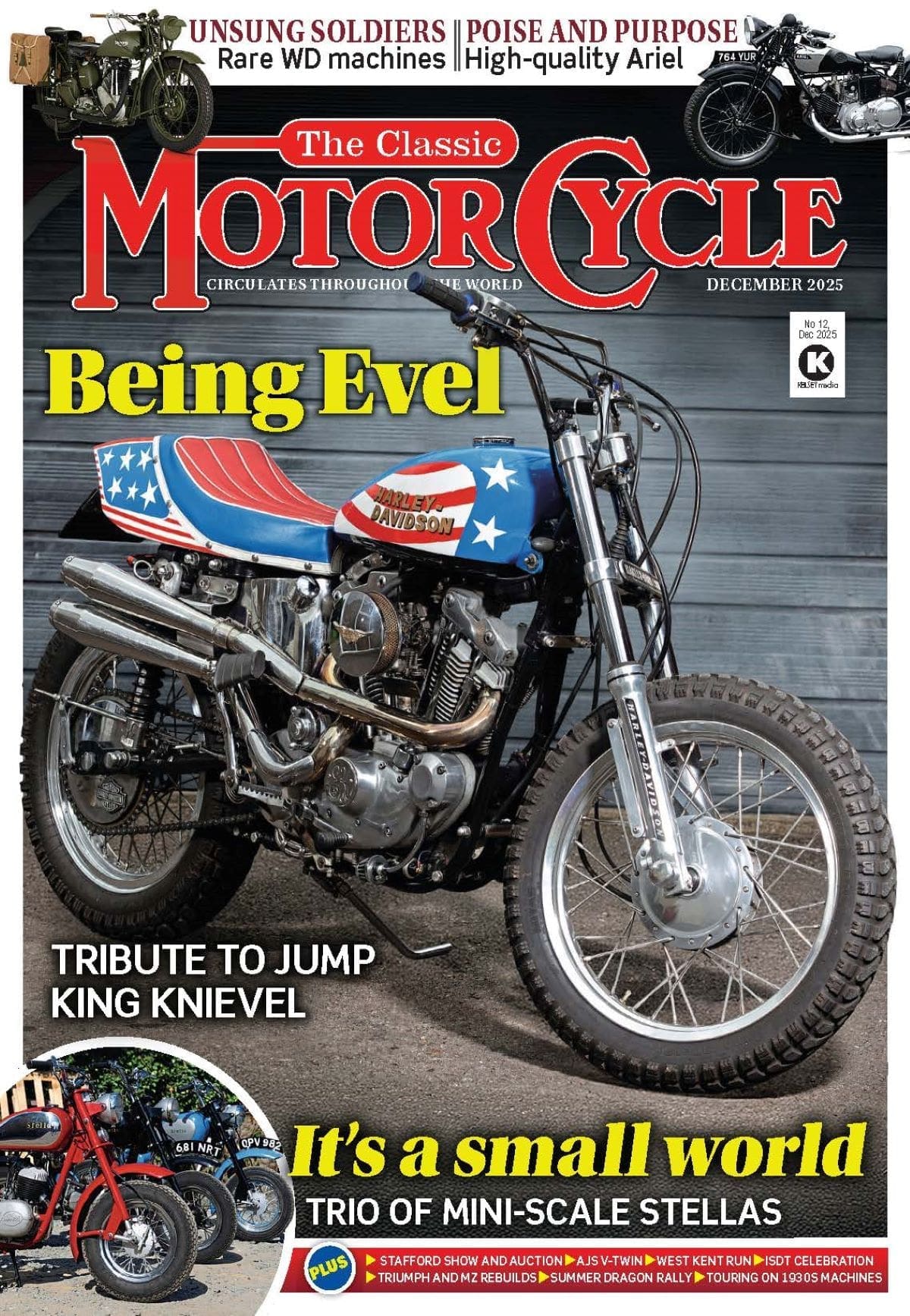There was a craze in the late 1950s to attract riders away from scooters onto motorcycles, with machines that were shrouded in panels and finished in natty colours, as exampled here.
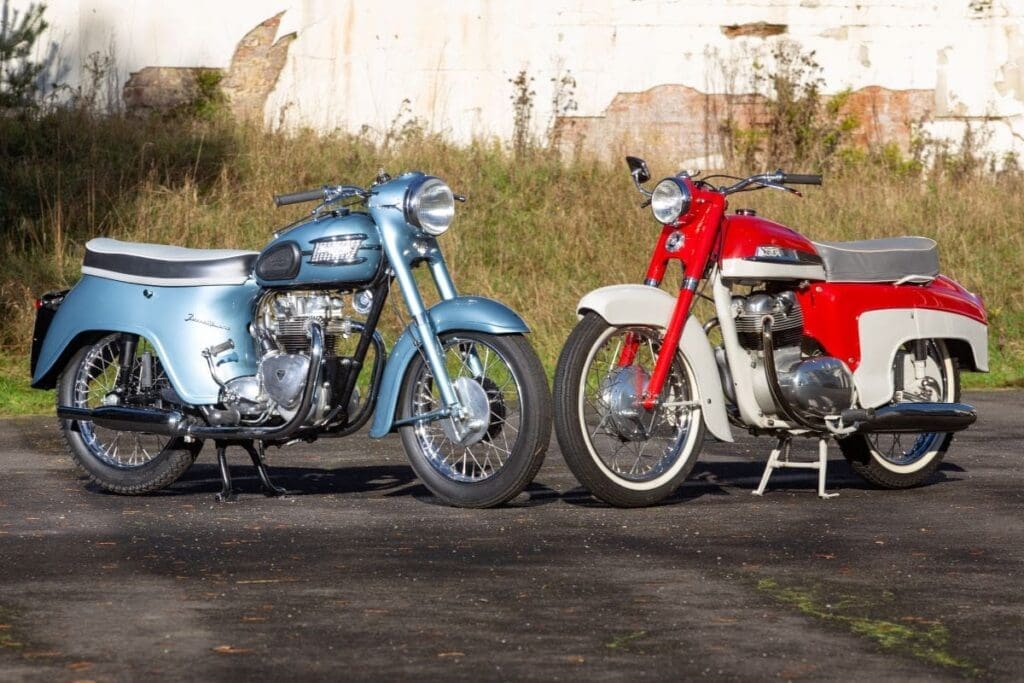
Words: Ian Kerr Photographs: Terry Joslin
The original intention was to test these two motorcycles for separate features, but to make life easier for all concerned, not to mention actually finding a dry, sunny day, we decided we would ride and photograph both of the machines at the same location.
However, it soon became clear that there were massive similarities, not only in the stories of the actual bikes and owners, but in historical terms, and it would provide an interesting comparison as they were both registered in 1960.
Enjoy more The Classic MotorCycle Magazine reading every month.
Click here to subscribe & save.
Norton buffs may well be saying ‘but the Jubilee Deluxe is just a 250 and the Triumph 21 is a 350’, but both of these two are 350s, for reasons I will explain as we go though their restorations and history.
Although for a long time dismissed by some as lacking in cubic capacity and not worthy of a place in the garage due to being mainstream and ‘not that special’, both are actually quite significant in their respective manufacturers’ history.
Designed in the late 1950s, the industry had realised that scooters were becoming more popular and had a growing market, largely thanks to the fact that they kept the rider relatively clean and dry. Triumph’s owners, BSA, had already had the unsuccessful Dandy scooter (first shown in 1955, actually on sale 1957) and then went on to launch the Edward Turner-designed Triumph Tigress/BSA-Sunbeam in October 1958. Both were available as 175cc two-stroke and a 250cc four-stroke, the only difference being the colour scheme and the name badge; though whatever name it was called by, neither were that successful.
Additionally, Triumph/BSA, like Norton, may well have got wind of impending legislation relating to motorcycle licences, implemented due to rising fatalities on two wheels. At the start of the next decade, 1960 saw the restriction on learner riders, with L plates, only being allowed to ride up to 250cc, unless a sidecar was attached, then the capacity restriction did not apply. Interestingly, government statistics for that year show that motorcyclists were covering 6.2 billion miles, which no doubt was the reason for the high casualty figures and death rate.
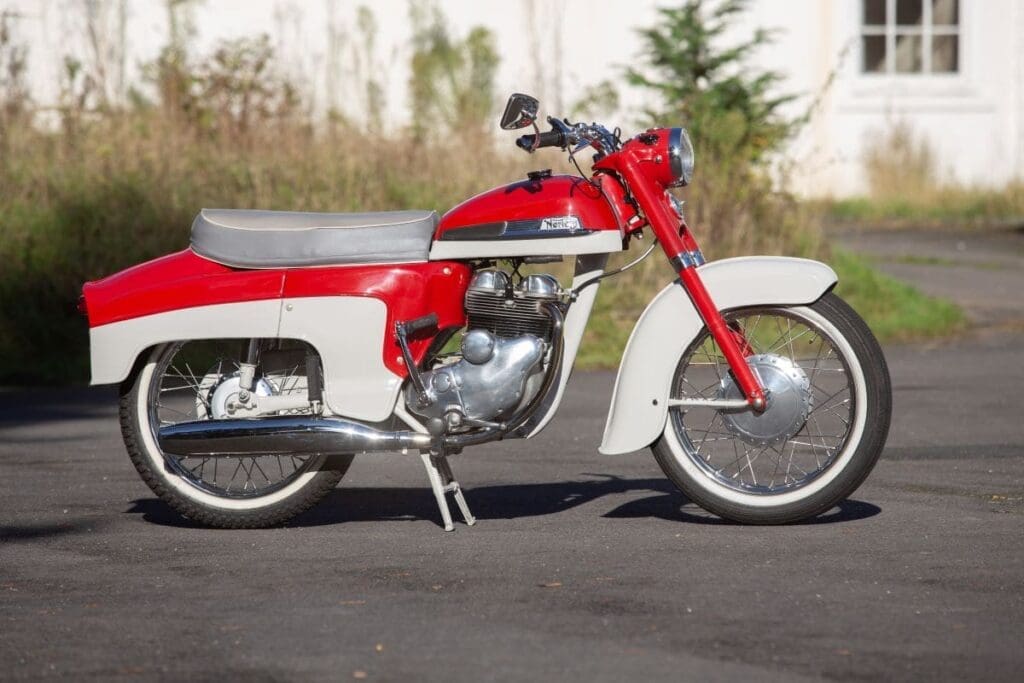
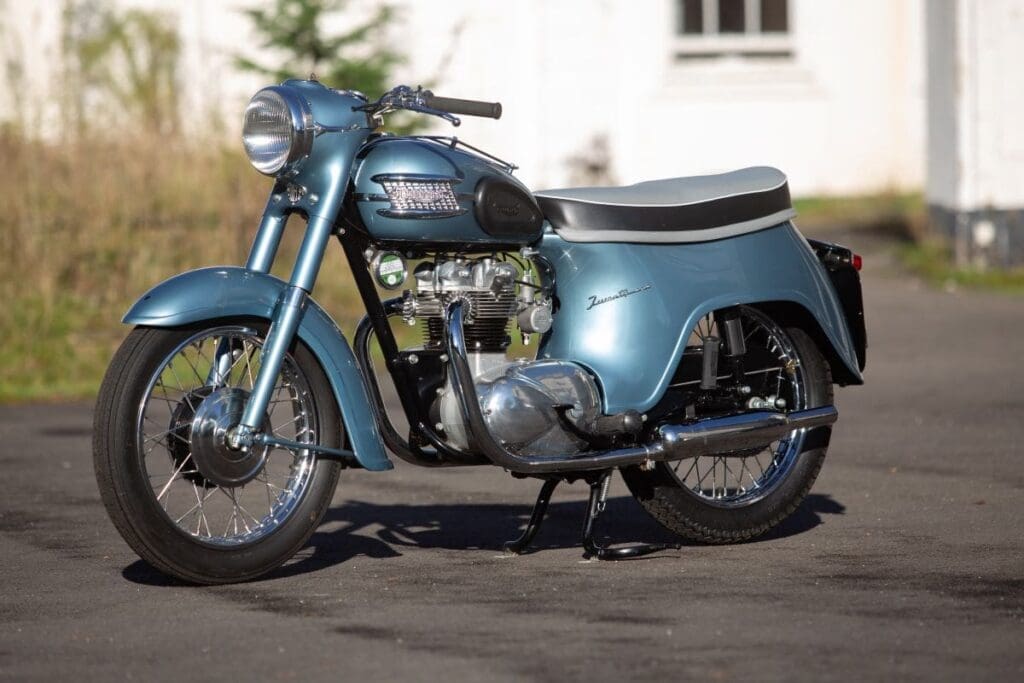
Given this statistic, selling motorcycles should have been relatively easy. Both the motorcycles featured here were part of a desire to attract a new clientele, riders who wanted not only clean lines and styled bodywork, but more importantly, better protection from the elements, not only for them, but for pillion passengers as well. These prospective buyers apparently just wanted transport, rather than a lifestyle.
While this may well have been the case in the UK, it was not the same in the USA. One of the biggest markets and with a better climate, neither Triumph nor Norton had much luck later with enclosures on machines, even when the engine capacities were raised. The success was probably partly because it made servicing more difficult and costly, but it was undoubtedly a style issue too. Steve McQueen didn’t ride a Bathtub…
In due course, Triumphs and Nortons lost the bodywork, which many UK buyers had already done, with the rise in the gatherings at places like the Ace Cafe and the ‘rocker’ movement seeing to that. In fact, like so many of their ilk, both these machines here had lost their adornments, the metal ‘Bathtub’ enclosure on the Triumph and Clarendon Pressings bodywork on the Norton both long gone when acquired by their respective owners. Sourcing original – rather than glass fibre – replacements was a time-consuming problem in both restorations.
The 250cc Jubilee was first seen in 1958 and was significant in that it was the first 250cc Norton to reach production. It was named appropriately as a Jubilee, to celebrate Norton’s then 60 years as a manufacturer. The machine was also the first to have a unit-construction engine, although it was not the same as the original Bert Hopwood design, which had integral heads and barrels.
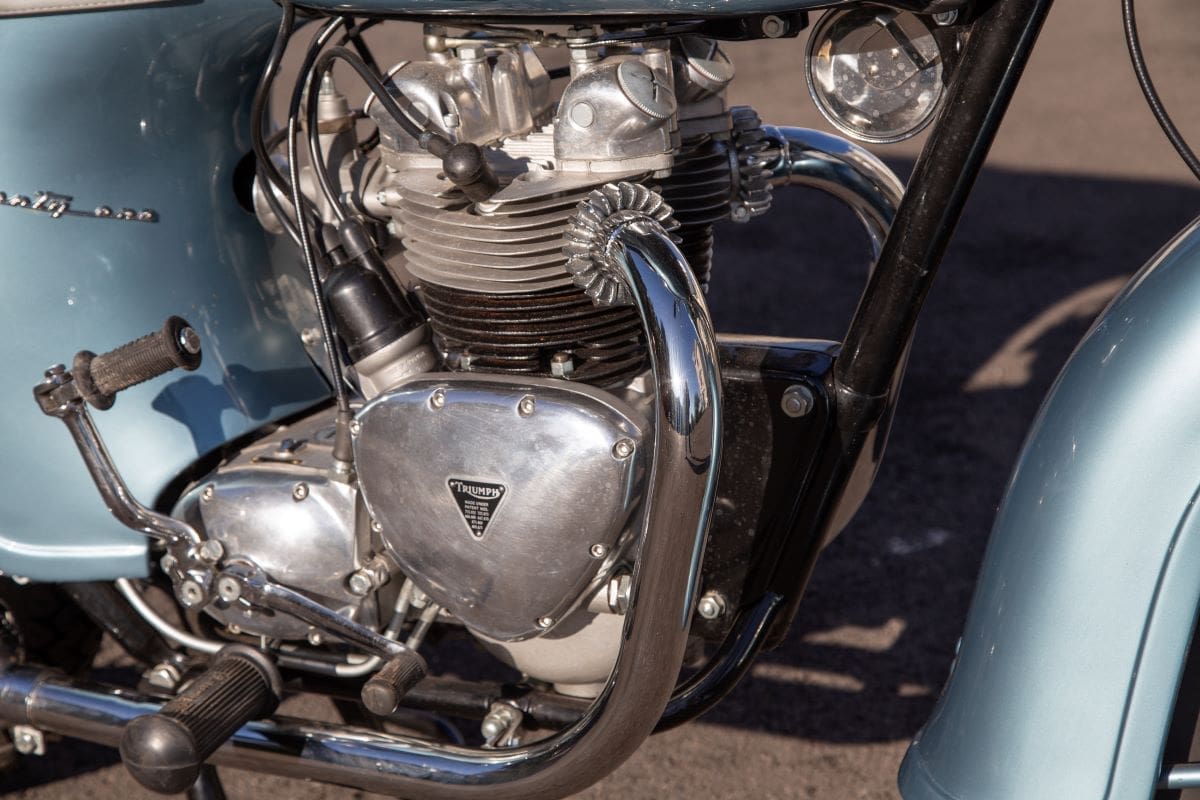
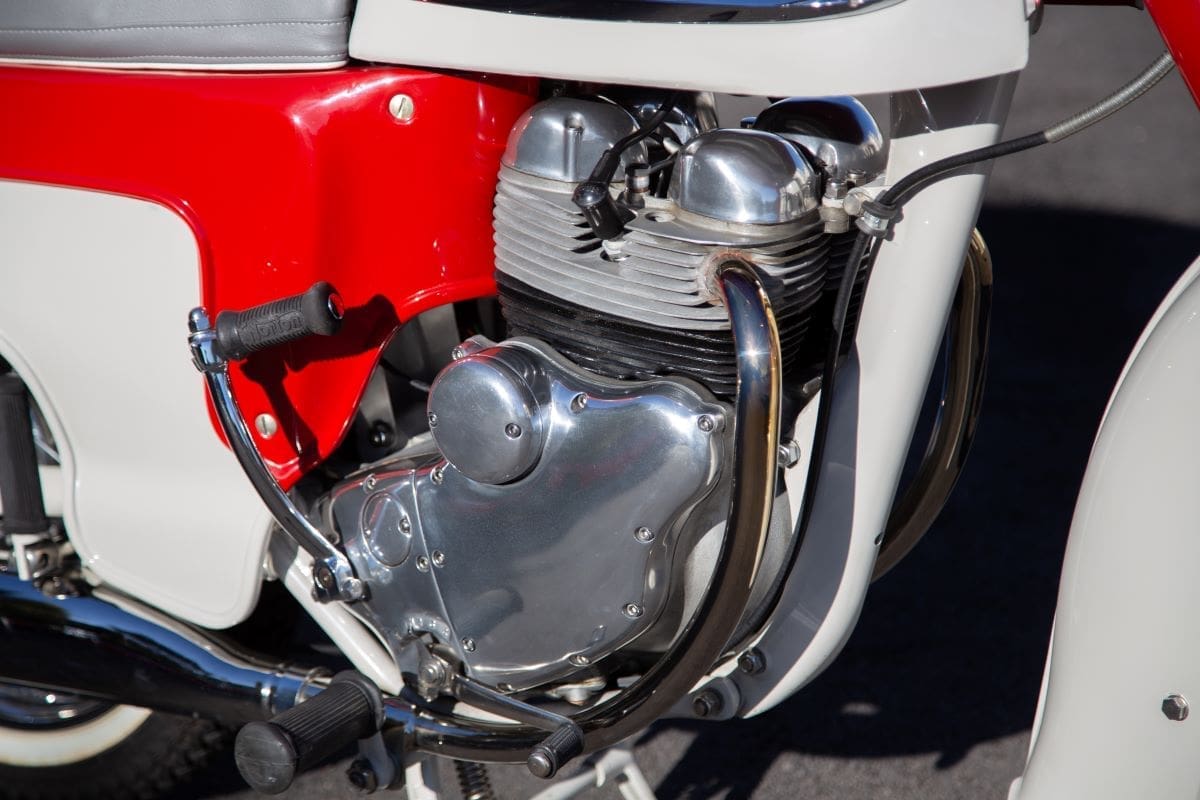
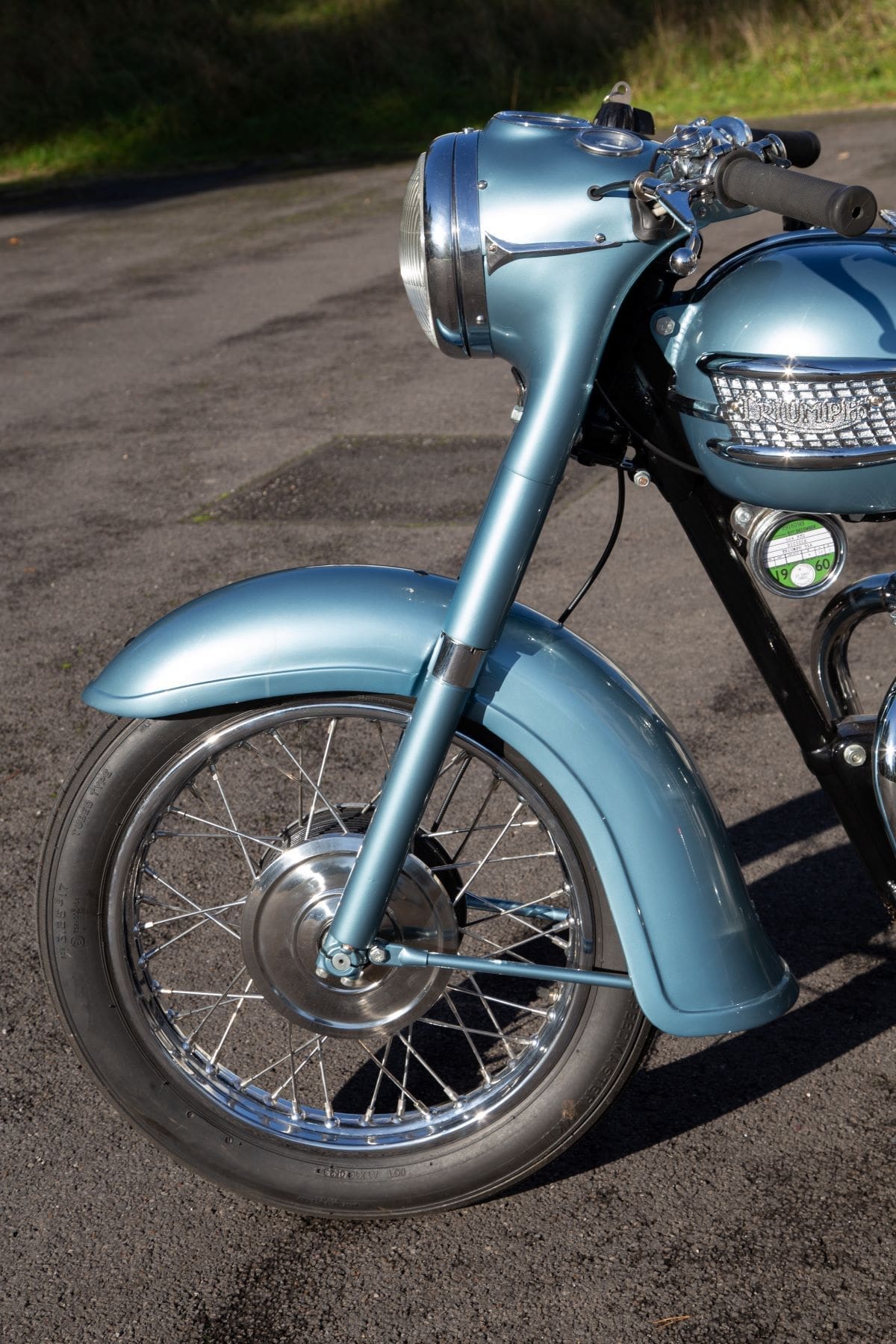
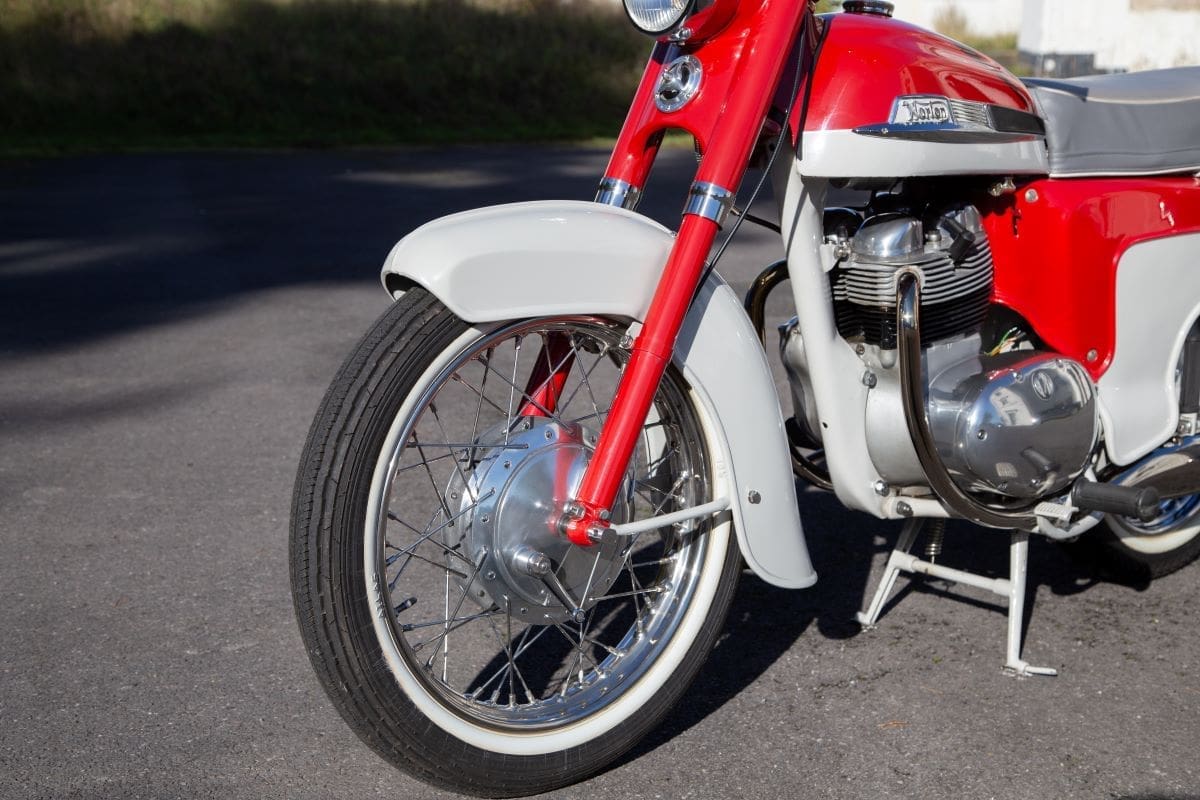
Convention – or, more correctly, internal politics – won the day and it had separate heads and barrel mated to a crankcase containing a four-speed gearbox, which came from Norton’s parent company (Associated Motor Cycles, or AMC) range.
The Jubilee’s short-stroke made it over square (60x44mm) with a claimed output of 16bhp at 7750rpm, giving a maximum top speed of 75mph. Initial models were unreliable, but soon improved, along with sales. Apart from the new powerplant, the rest of the bike was something of a parts bin special, made up from parts already used on other machines in the AMC stable.
For instance, the frame was derived from a 1957 Francis-Barnett Cruiser with a fabricated pressed steel downtube. The forks, brakes and running gear came from the same Fanny-B source. Electrics were six-volt from Wico Pacy with a six-inch headlight, with the bike weighing in at 325lb.
Thanks to the rear enclosures and the fully enclosed final drive chaincase which was an optional extra on the Deluxe model (at a cost of £3-10s-4d), the chain oiled by a breather pipe from the oil tank, it was billed as having a modern, clean look. It was available with red, blue or green panels contrasting the Dove Grey paintwork. Some suggest that the two-tone colour scheme was aimed at Americans with a nod to the similarly dressed Cadillacs, in the hope of attracting sales.
Period road tests mentioned the need to rev the bike to make progress and cited lack of ground clearance, and it seems little development was done, probably because of poor sales, while Norton soon brought out a larger version, the 350cc Navigator, launched at the 1961 motorcycle show.
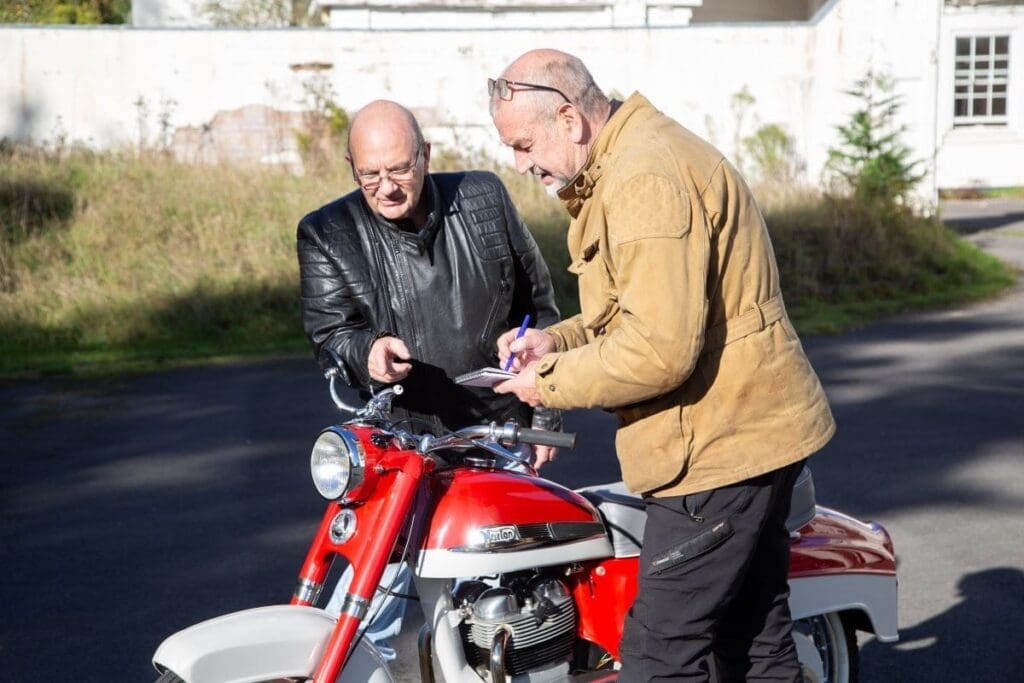
The bigger engine, although looking much the same as the smaller capacity iteration, was improved in many ways. The frame had been stiffened, too, and had the addition of Norton Roadholder forks, to mention some of the other improvements over the Jubilee, which was now offered without the rear enclosures and would survive for another five years, catering mainly for the learner market.
The Triumph 21, launched a year earlier than the Norton, can also claim a first, in that it was the opening unit construction twin from the Meriden factory. Designed by Edward Turner, the 349cc twin had a 360-degree crankshaft, twin cams and twin plunger oil pump. An alloy head sat on cast iron barrels with separate rocker boxes. A four-speed gearbox transmitted the 18.5bhp at 6500rpm, with the bike weighing in at 340lb, just 15lb more than the smaller Norton.
Apparently, there are two explanations as to the 21 designation, the first being it celebrated the 21st anniversary of the Triumph Engineering Company Ltd and the second that as the Americans like to use cubic inches when talking engines – 350cc is the equivalent of 21 cubic inches.
No matter which one you believe, it was later designated 3TA, the A standing for alternator to differentiate it from earlier pre-unit 3T models (1945-51) and it remained listed until 1966.
Much of the 21 was standard Triumph fare, with a single down and top tube frame joined by duplex engine rails. Front forks carried the famous nacelle headlamp housing and brakes were seven-inch diameter, with everything rolling on 17-inch rims and tyres.
Early models had a moulded rubber tray under the dual seat which could be locked by unscrewing the catch. The tray had cut-outs for the tool kit, but was soon dropped as it tended to collect water and rust the tools. The bike also had a two-piece rear chainguard, again in an effort for cleanliness.
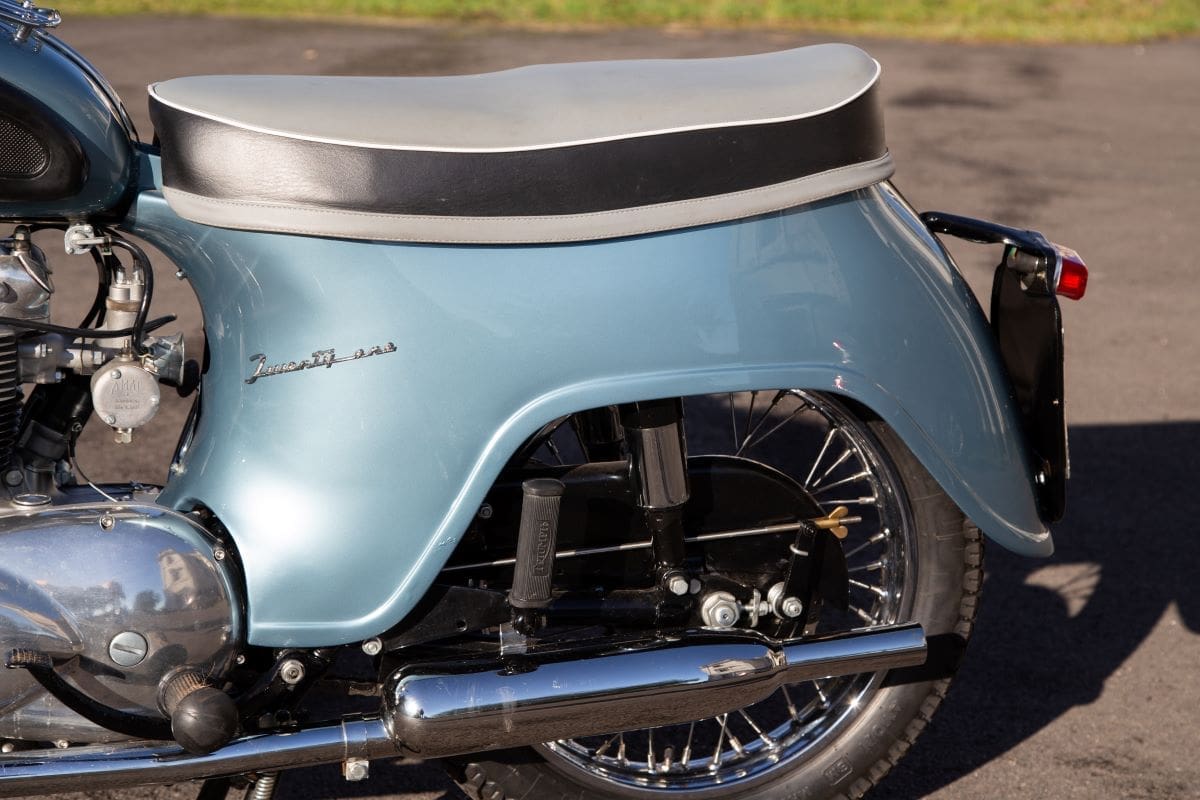
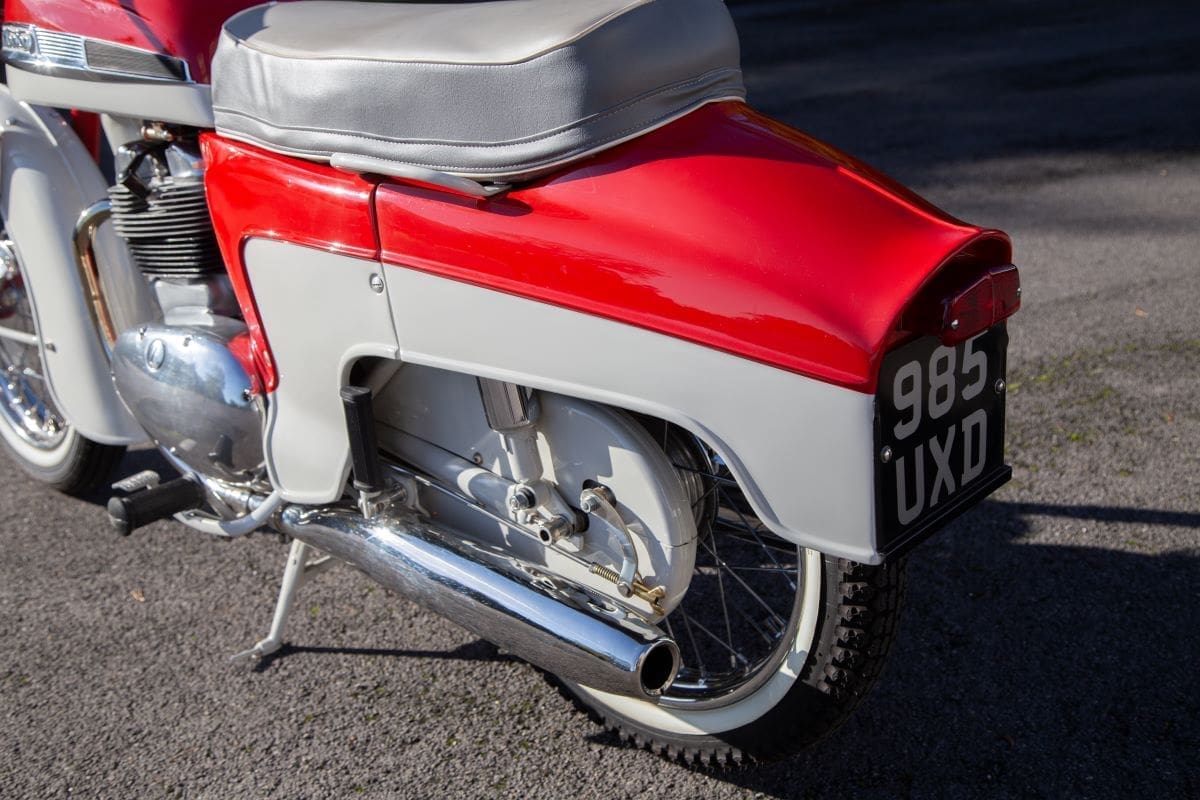
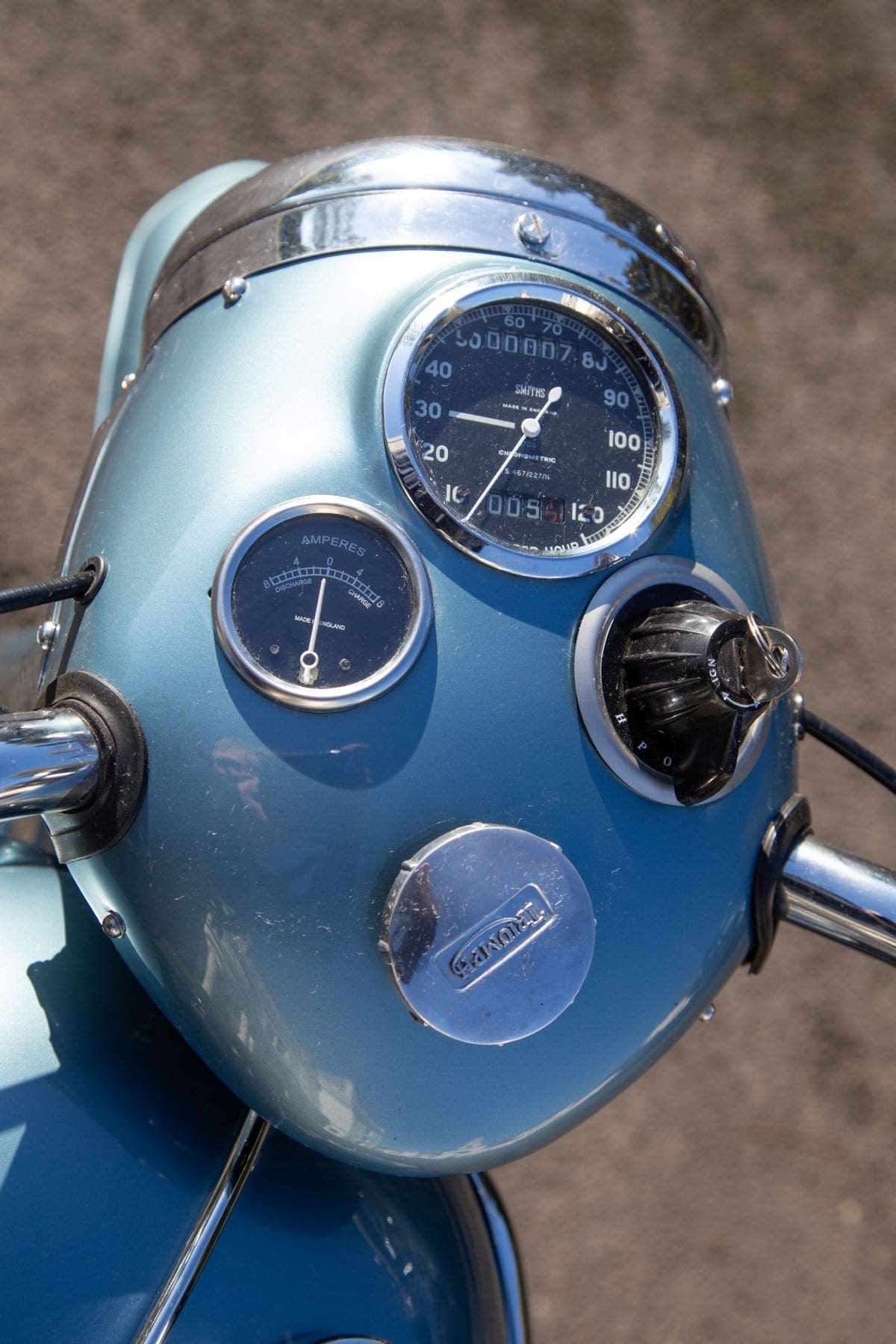
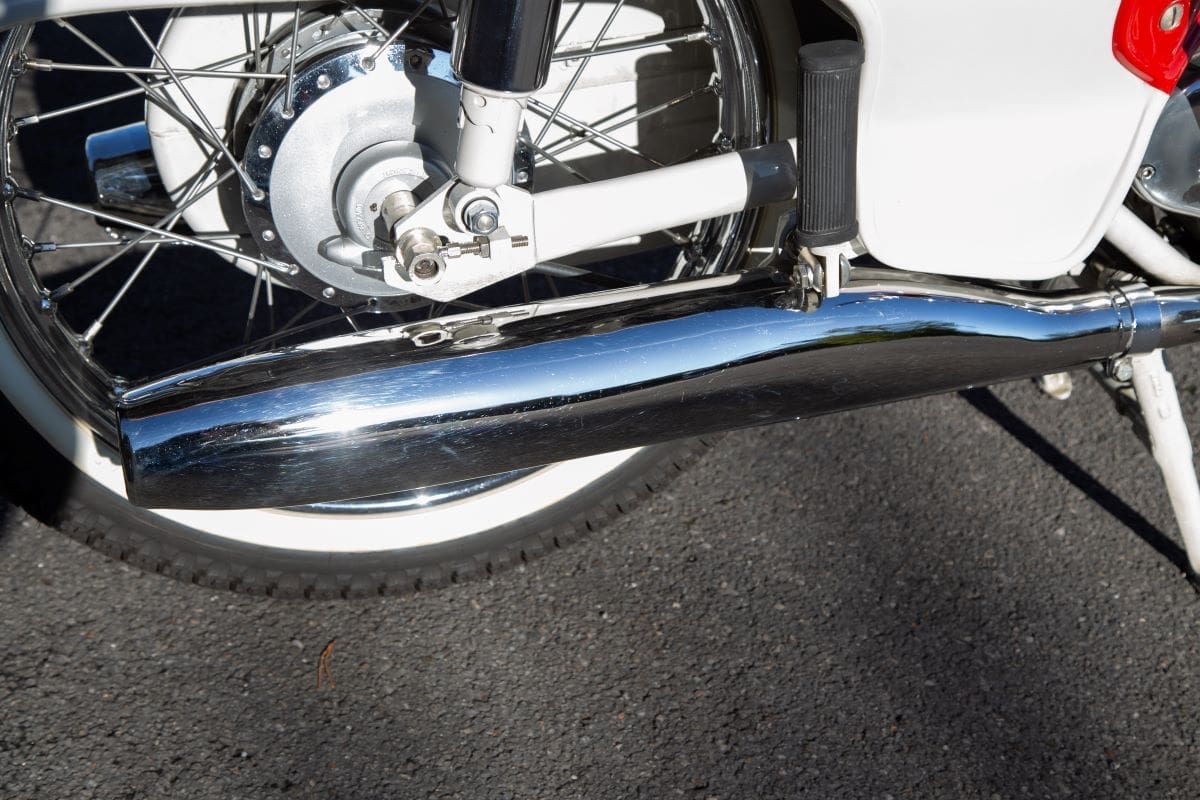
With a top speed of 80mph, road tests were quite complimentary and stated it was an easy bike to ride with no real problems or vices. Costing £175, the then-dreaded purchase tax pushed it to £217.
So, as they left the factory, both bikes had a few similarities before ending up as rusting wrecks that would present a challenge to any restorer. In another twist of fate, it was to take 20-odd years for both to be resurrected to the condition you see here.
The Triumph belongs to retired firefighter Dave Harris, whose Norton Commando Interstate has been featured in these pages too. A real enthusiast who has a small collection of motorcycles including modern Japanese machinery, Dave had the Triumph languishing awaiting attention for as long as he can remember, it being part of his earlier life and somewhat special to him.
Having seen what restoration specialist Paul Sands did with his Norton, there was only one option – deliver the Triumph to Paul and get it finally on the road.
As with the Commando, Dave wanted it to full, correct catalogue specification and as Paul explains, getting original tinware was the biggest problem, with engine parts and such quite easy to come by. But, after a lot of searching, the bike pictured here is largely as it left the factory, with a full metal Bathtub and deeply valanced front mudguard, though the underseat tool tray and tools are missing.
In complete colour contrast to the stunning polychromatic blue Triumph is the red and Dove Grey Norton owned by Duncan Carson, which actually does have the small tool tray under the seat, albeit also lacking an original toolkit.
Now a sprightly 78-year-old, Duncan eventually found the time to restore the bike himself having bought it in a very poor state 20 years ago, having paid £295 for the wreck on eBay. Although up to then he had never owned or ridden one, Duncan used to see a Jubilee on the road when walking to school in Bisham, near Marlow in Buckinghamshire, many years ago, and it made a real impression on him.
Duncan’s first motorcycle was an Excelsior R10 Roadmaster, bought after just missing out on a Jubilee for sale locally, which is what he really wanted, swayed by, as he says: “Its good looks”.
Although apprenticed as a mechanic in a Jaguar and Ford dealership working on some pretty special vehicles, he did not ride for many years, like many, due to family commitments, although his brother raced in BEMSEE meetings and so Duncan maintained the interest in two wheels. He then returned to riding and has had an impressive list of motorcycles, including many sports machines, and has recently been helping his nephew Scott Carson, who is doing well in modern motorcycle racing.
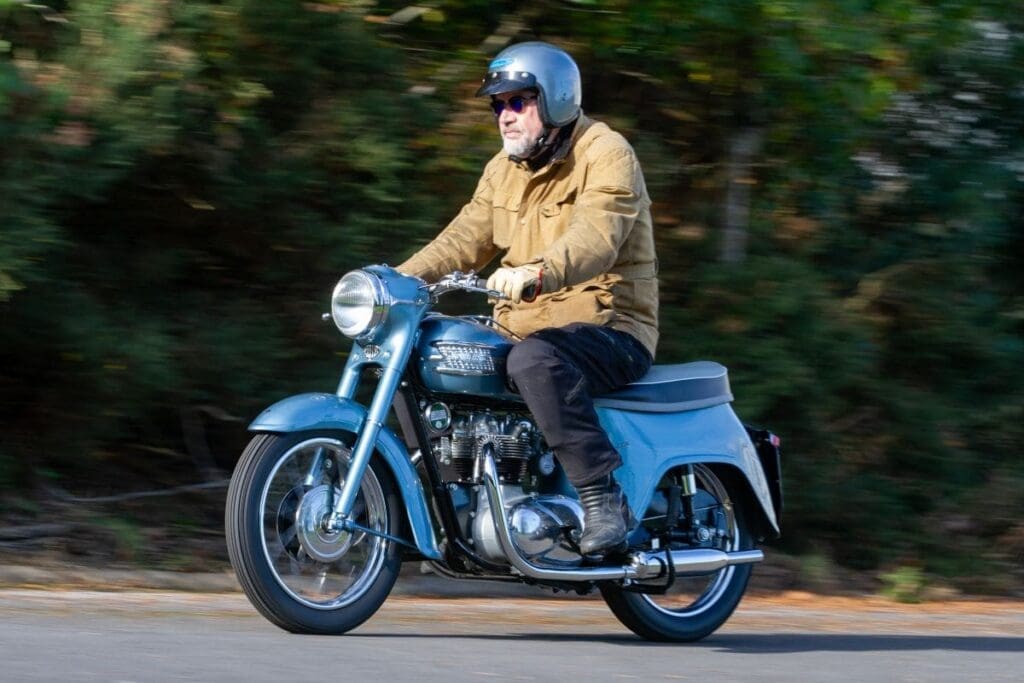
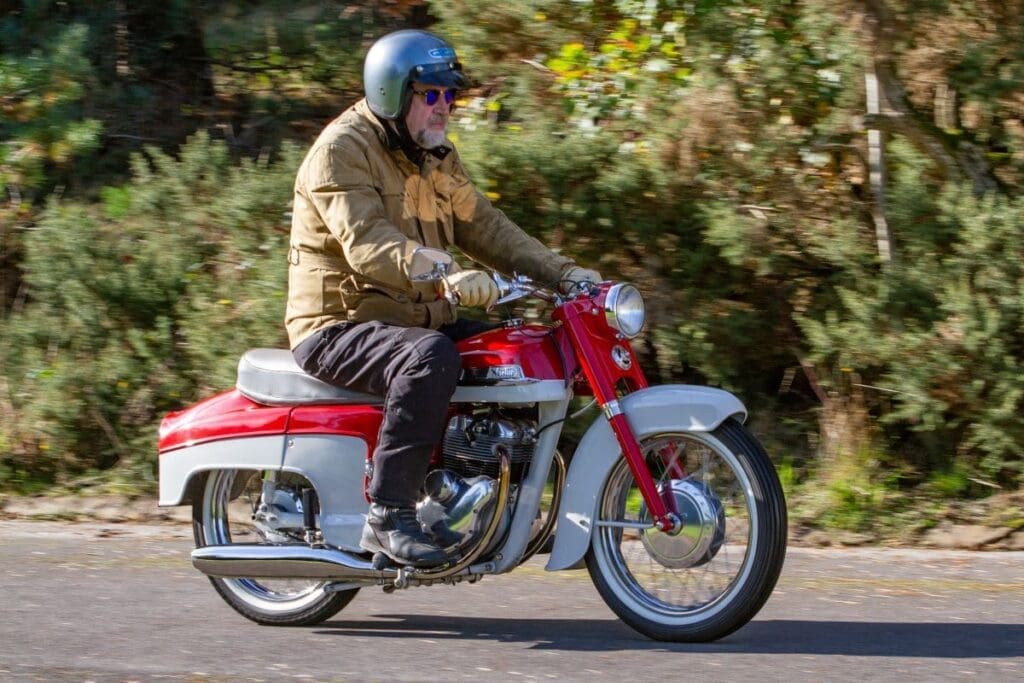
Until lockdown, Duncan hadn’t found the time to actually do anything with his Jubilee since purchase. It was stripped when he got it to allow him to ascertain what was needed, and over the years, he has gradually sourced parts when they became available, so when he started, he was able to complete the build quickly, but he set about modifying it subtly to make it more rideable and by the sounds of it, safer.
The engine was made up of different parts, the crankcases being machined to fit together so they are now oil-tight (a failing when new). Duncan’s machine was given a capacity boost, as Norton Navigator cylinder heads and barrels, which were bored out to 40 thou’ oversize, plus new pistons, were fitted, along with a Navigator crankshaft. The camshafts used are from the later, 400cc Electra model.
On the chassis front, the front forks were fitted with stronger springs and the front wheel came from a Royal Enfield Crusader, so it now has a seven-inch, as opposed to six-inch, brake for better stopping power. A new 18-inch stainless steel rim with 40 instead of 36 spokes was used to deal with the improved braking forces.
While he modified some parts, Duncan sourced a genuine Wipac brake light switch from America, along with other numerous parts to keep with originality as far as possible. As he points out, although the bodywork and mudguard look the same as fitted to other Norton models (specifically, Dominator De Luxe) it is not, and only the correct parts fit, although it is actually fitted with adapted silencers from a Dominator, which sound a little more purposeful.
Duncan personally feels the two-tone paint scheme is reminiscent of an uncle’s 1956 two-tone Ford Zodiac, rather than Norton looking to the USA for inspiration. The paintwork is two-pack sprayed by Duncan’s son, who used a scanner on original parts to get a colour match. Apparently, the red comes from a Daihatsu car and is 95% correct colour wise, while the Dove Grey had to be mixed to get a 90% match to the original colour.
Looking around the bike and bodywork with its small window allowing the single carb to be ‘choked,’ I thought it was stunning without looking over the top, and probably closer to the original rather than a stove enamelled finish.
Watching Dave and Duncan riding side-by-side, it was interesting to think that in their day, both models provided adequate transport at a reasonable price, but one could see why they might be sneered at down the cafe, as neither was likely to make the ‘Jukebox run’ successfully.
As the owner of a Triumph twin with a unit construction engine, I chose the Norton to ride first, and came back very impressed. I did not find the lack of ground clearance and the ‘big bore’ Jubilee was a delight, tracking smoothly and being relatively vibration free, despite having to rev the engine a little still, despite the increased capacity.
Moving across to the Triumph, it was like putting on a pair of old slippers and I felt instantly at home. The 21 was spot-on despite having just a few shakedown miles by Paul and was everything I would expect from a Triumph twin of that age and standard of restoration applied.
In fact, both these machines are excellent examples of what can be achieved by people with engineering skills and a passion to get it right. As for costs – it’s probably best not to ask… There’s a new buzzword, ‘rightsizing,’ and I just wonder if these factories were doing that under a different name, all those years ago.
Both the Norton and the Triumph are capable of keeping up with modern traffic if you stay away from motorways, but for vintage events and a run round the lanes on a sunny day, either will provide adequate and enjoyable riding, and cost a lot less than some more exotic mounts. It is nice to see both fully clothed as their makers intended and as I said, related in so many ways.
